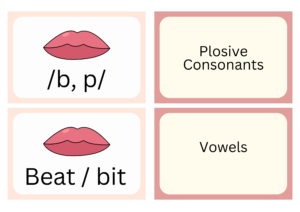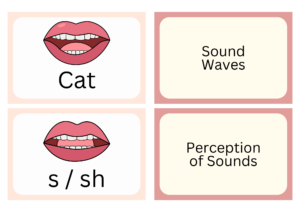Experts explained Phonetics and Phonology in Accent Reduction
For language learners aiming to reduce their accents, understanding the nuances of phonetics and phonology is a game-changer. Phonetics and Phonology are two linguistic fields that contribute to more effective accent reduction and clearer communication in English.
What are Phonetics and Phonology?
Phonetics refers to the study of the production and perception of speech sounds. It examines the physical properties of sound, such as pitch, loudness, and quality. Phonology, on the other hand, focuses on how sounds function within a particular language, including the rules governing their combination and pronunciation (Ladefoged & Johnson, 2011).
The Role of Phonetics in Accent Reduction
Understanding phonetics is crucial in accent reduction. It involves learning the articulatory gestures that produce various sounds. For example, a study by Munro & Derwing (1995) revealed that explicit instruction in phonetics can significantly improve pronunciation in language learners. This entails practicing the placement of the tongue, lips, and breath control to produce sounds that are typical in English but may be absent in the learner’s native language.
Phonetics Examples
1. Articulatory Phonetics:
- Plosive Consonants: Consider the difference between the sounds of ‘p’ as in “pin” and ‘b’ as in “bin.” Both are produced by releasing a burst of air, but ‘p’ is voiceless (no vibration of the vocal cords), while ‘b’ is voiced.
- Vowels: The vowel sounds in “beat” and “bit” differ in tongue position and mouth openness, demonstrating vowel articulation.
2. Acoustic Phonetics:
- Sound Waves: Analyzing the sound wave of the word “cat.” The wave’s form shows the changes in air pressure due to the different sounds (k, æ, t) produced.
3. Auditory Phonetics:
- Perception of Sounds: How listeners differentiate between a high-pitched ‘s’ sound and a lower-pitched ‘sh’ sound, even though they are acoustically similar.

Phonology Examples
1. Phonemes:
- Minimal Pairs: Words like “bat” and “pat” differ by only one phoneme (/b/ vs. /p/) and illustrate how phonemes are the smallest units of sound that can change meaning in a language.
2. Stress and Intonation:
- Sentence Stress: In the sentence “I didn’t say she stole my money,” the meaning changes depending on the stressed word.
- Intonation: The rising intonation in a question like “You’re going?” versus the falling intonation in a statement like “You’re going.”
3. Rules of Sound Combination:
- English Syllable Structure: In English, a syllable can start with up to three consonants as in “spring,” but this structure isn’t allowed in many other languages.
- Assimilation: In rapid speech, “handbag” often sounds like “hambag,” showing how phonological rules modify sounds in specific contexts.
Phonetics focuses on the physical and biological aspects of sounds, while phonology deals with how sounds function within a particular language system. Understanding these concepts is essential for language learners, especially in accent reduction and effective communication.
Phonology and Sound Patterns
Phonology helps learners understand the patterns and systems of sounds in English. It involves more than just producing individual sounds; it’s about understanding how sounds interact with each other. For instance, the concept of stress and intonation patterns in English sentences can dramatically alter meaning, which is an essential aspect of effective communication (Pike, 1945).
Integrating Phonetics and Phonology in Learning
Integrating both phonetics and phonology in language instruction can lead to more successful accent reduction. A study by Pennington and Ellis (2000) suggests that a combination of phonetic training (like distinguishing between similar sounds) and phonological awareness (like understanding syllable structure) can be highly beneficial for learners.
Practical Application
Here’s how learners can apply these concepts:
Phonetic Practice: Engage in exercises that involve mimicking sounds. Recording and listening back to your pronunciation can be incredibly helpful.
Phonological Awareness: Pay attention to the rhythm and melody of English. Try shadowing exercises where you mimic a native speaker, paying attention not only to individual sounds but also to the rhythm and intonation.
Understanding the intricacies of phonetics and phonology can significantly enhance accent-reduction efforts. By focusing on both the physical production of sounds and their contextual use in language, learners can achieve clearer, more natural-sounding English.
We Value Your Voice!
At MyAccentTrainer, we’re dedicated to supporting your language learning journey. If you have any questions or need assistance, don’t hesitate to reach out. Our support team is here to assist you with understanding and care, making sure every query is answered to your satisfaction.
We’re thrilled to be a part of your path to mastering English pronunciation. Look forward to our upcoming updates, and remember, your progress in pronunciation proficiency is our main goal. Stay connected with MyAccentTrainer’s community for the latest updates! Follow us on [Facebook/Instagram/Twitter]
Warm regards,
The My Accent Trainer Team
References
Ladefoged, P., & Johnson, K. (2011). A Course in Phonetics. Wadsworth Publishing.
Munro, M. J., & Derwing, T. M. (1995). Foreign accent, comprehensibility, and intelligibility in the speech of second language learners. Language Learning, 45(1), 73-97.
Pike, K. L. (1945). The Intonation of American English. University of Michigan Press.
Pennington, M. C., & Ellis, N. C. (2000). Cantonese speakers’ memory for English sentences with prosodic cues. Modern Language Journal, 84(3), 372-389.

